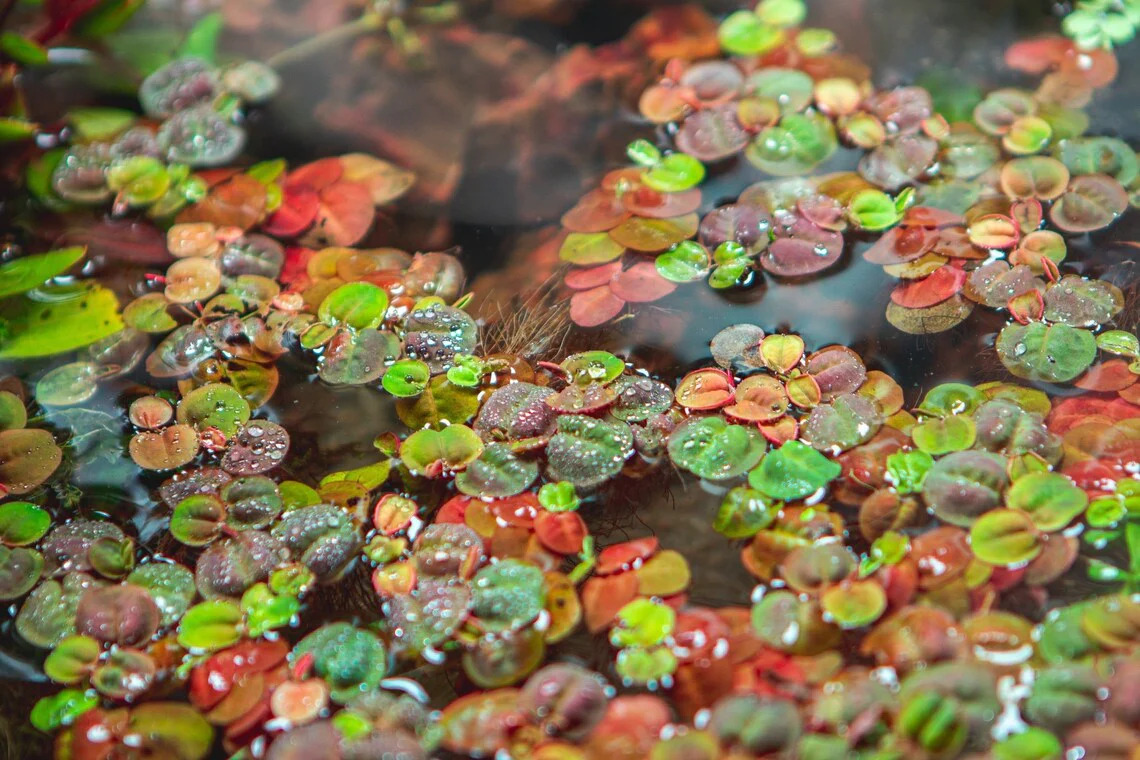Discover the mesmerizing beauty of red root floaters and learn how to care for and propagate these stunning aquatic plants.
Understanding Red Root Floaters: An Introduction
Red root floaters (Phyllanthus fluitans) are a captivating species of aquatic plants that add a vibrant touch to any aquarium or pond. With their delicate red roots and floating leaves, these plants create a visually stunning display that can instantly enhance the aesthetic appeal of your aquatic environment.
Native to South America, red root floaters are commonly found in slow-moving rivers, lakes, and marshes. They are well-adapted to aquatic life and have unique reproductive strategies that make them a fascinating addition to any aquatic plant collection.
In this guide, we will explore the various aspects of red root floaters, including how to create the perfect environment for them, how to care for them in terms of water, light, and nutrients, how to propagate them successfully, and common issues you may encounter along the way.
Whether you're a beginner or an experienced aquarist, this guide will provide you with all the information you need to successfully care for and propagate red root floaters.
Creating the Perfect Environment for Red Root Floaters
To ensure the health and vitality of your red root floaters, it's essential to create the perfect environment that mimics their natural habitat. Here are some key factors to consider:
1. Water Conditions: Red root floaters thrive in slightly acidic to neutral water with a pH range of 6.0 to 7.5. It's important to regularly monitor the water parameters and make any necessary adjustments to maintain optimal conditions for your plants.
2. Lighting: These plants require moderate to high levels of lighting to support photosynthesis and promote healthy growth. LED lights or fluorescent lights with a color temperature of 6500K to 7000K are recommended for best results.
3. Nutrients: Red root floaters are heavy feeders and require an ample supply of nutrients to thrive. Adding a liquid fertilizer specifically formulated for aquatic plants can help provide the necessary nutrients for their growth and development.
By providing the right water conditions, lighting, and nutrients, you can create an ideal environment for your red root floaters to flourish and showcase their vibrant colors.
Caring for Red Root Floaters: Water, Light, and Nutrients
Proper care is essential for maintaining the health and vitality of your red root floaters. Here are some important care tips to keep in mind:
1. Water Quality: Regularly test the water parameters, including pH, ammonia, nitrite, and nitrate levels, to ensure they are within the suitable range for red root floaters. Performing regular water changes can also help maintain good water quality.
2. Lighting Schedule: Red root floaters require a photoperiod of around 8 to 10 hours per day. It's important to establish a consistent lighting schedule and avoid sudden changes in light intensity, as it can stress the plants.
3. Nutrient Supplementation: In addition to the nutrients naturally present in the water, red root floaters benefit from regular supplementation with a liquid fertilizer. Follow the instructions provided with the fertilizer to ensure proper dosage.
Regular monitoring of water quality, maintaining a consistent lighting schedule, and providing adequate nutrients will help keep your red root floaters healthy and thriving.
Propagating Red Root Floaters: A Step-by-Step Guide
Propagating red root floaters, among other aquarium floater plants is relatively easy and can be done through various methods. Here's a step-by-step guide to help you propagate your plants successfully:
1. Identify Healthy Parent Plants: Choose mature and healthy red root floaters as your parent plants for propagation. Look for plants with vibrant colors and strong root systems.
2. Separation: Gently separate a small cluster of red root floaters from the parent plant. Ensure that each cluster has enough roots and leaves for independent growth.
3. Plant Placement: Place the separated plants in a suitable location in your aquarium or pond. Make sure they have access to sufficient light and nutrients.
4. Care and Maintenance: Continue to provide the necessary care, including regular water changes, adequate lighting, and nutrient supplementation, to support the growth of the propagated plants.
With proper care and patience, your propagated red root floaters will establish themselves and contribute to the overall beauty of your aquatic environment.
Common Issues and Troubleshooting: Maintaining Healthy Red Root Floaters
While red root floaters are generally hardy plants, they can face some common issues that may affect their health and growth. Here are a few common issues you may encounter and some troubleshooting tips to overcome them:
1. Nutrient Deficiency: If you notice pale or yellowing leaves, it may indicate a nutrient deficiency. Consider adjusting your fertilization routine or supplementing with a suitable aquatic plant fertilizer.
2. Algae Overgrowth: Red root floaters may face competition from algae if the lighting or nutrient balance is not properly maintained. Regularly clean the tank or pond, control the lighting duration, and ensure a balanced nutrient supply to prevent excessive algae growth.
3. Water Current: Excessive water current can cause red root floaters to struggle or detach from their roots. Consider adjusting the water flow or creating a calmer area for the plants to thrive.
By addressing these common issues promptly and providing the necessary care, you can maintain the health and beauty of your red root floaters.






Leave a Comment